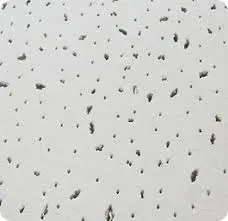- Afrikaans
- Albanian
- Amharic
- Arabic
- Armenian
- Azerbaijani
- Basque
- Belarusian
- Bengali
- Bosnian
- Bulgarian
- Catalan
- Cebuano
- Corsican
- Croatian
- Czech
- Danish
- Dutch
- English
- Esperanto
- Estonian
- French
- German
- Greek
- Hindi
- Indonesian
- irish
- Italian
- Japanese
- Korean
- Lao
- Malay
- Myanmar
- Norwegian
- Norwegian
- Polish
- Portuguese
- Romanian
- Russian
- Serbian
- Spanish
- Swedish
- Thai
- Turkish
- Ukrainian
- Uzbek
- Vietnamese
11월 . 12, 2024 07:51 Back to list
what is a grid ceiling
What is a Grid Ceiling?
A grid ceiling, often referred to as a suspended or drop ceiling, is a type of ceiling system that is popular in both commercial and residential buildings due to its versatility, aesthetic appeal, and practical benefits. This system typically consists of a framework of metal grid or tiles that are suspended from the structural ceiling above, allowing for a space between the two for housing electrical wiring, plumbing, and HVAC systems.
Components of a Grid Ceiling
The main components of a grid ceiling include the ceiling tiles and the metal grid. The grid is composed of runners and cross tees that create a framework to hold the tiles in place. The tiles themselves are usually made of lightweight materials such as mineral fiber, fiberglass, or even metal, which are designed to fit neatly into the grid.
1. Metal Grid The grid provides structural support and is often made of galvanized steel or aluminum. It can be installed in various configurations depending on the desired aesthetics and the weight of the ceiling tiles.
2. Ceiling Tiles Available in a vast array of styles, colors, and textures, ceiling tiles enable customization of the ceiling space. Acoustic tiles, for example, are designed to absorb sound and can significantly improve the acoustics of a room.
Installation Process
The installation of a grid ceiling is relatively straightforward, although it does require some technical skills. First, the existing ceiling is measured to determine the layout. The metal grid is then installed, typically starting from the perimeter of the room and working towards the center. Once the grid is in place, ceiling tiles can be cut to fit and placed into the grid openings. Workers often use specialized tools to ensure that the tiles are fitted accurately and securely.
Advantages of Grid Ceilings
what is a grid ceiling

1. Aesthetic Flexibility One of the main appeals of grid ceilings is the ability to easily customize the look of a room. With various tile options available, from smooth finishes to textured or patterned designs, homeowners and designers can achieve the desired ambiance and increase visual interest.
2. Concealed Infrastructure One of the standout features of a grid ceiling is its ability to hide wiring, ductwork, and pipes. This provides a cleaner, more organized appearance while maintaining easy access for repairs or modifications.
3. Acoustic Benefits The sound-absorbing properties of many ceiling tiles help reduce noise levels, making grid ceilings a popular choice for offices, schools, and other settings where sound control is crucial.
4. Thermal Insulation Some ceiling tiles offer additional insulation benefits, helping to maintain a comfortable temperature indoors, which can lead to savings in energy costs.
5. Easy Access and Maintenance The suspended nature of grid ceilings means that tiles can be easily removed for access to the systems above, making maintenance more convenient than traditional ceiling options.
Disadvantages and Considerations
While grid ceilings have numerous benefits, they also come with some potential downsides. For instance, they can reduce the height of a room, which may not be ideal in smaller spaces. Additionally, certain tiles can be susceptible to damage from moisture, making them less suitable for areas like bathrooms or kitchens if not specifically designed for such environments.
Conclusion
In summary, a grid ceiling is a functional and aesthetic ceiling solution that offers a wide range of benefits, including ease of installation, acoustic properties, and design flexibility. Whether used in commercial settings or home renovations, grid ceilings provide a practical and visually appealing way to enhance any space. As building techniques evolve, the grid ceiling remains a timeless choice that can meet the needs of modern architecture and design, making it a staple in contemporary construction.
-
PVC Laminated Gypsum Ceiling Board OverviewNewsApr.11,2025
-
Mineral Fiber Ceiling Tiles Price Analysis and ComparisonsNewsApr.11,2025
-
Crafts of Mineral Fiber Ceiling Tile ManufacturingNewsApr.11,2025
-
Difference Between Gypsum and PVC CeilingNewsApr.11,2025
-
An Overview of Mineral Fiber Ceiling TilesNewsApr.11,2025
-
Advantages of PVC Gypsum CeilingNewsApr.08,2025







